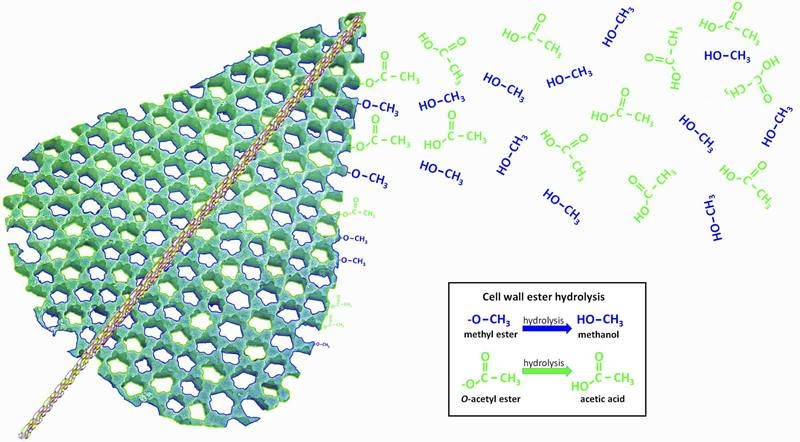The Science
Scientists know that plants emit large amounts of gases like methanol and acetic acid. These gasses are not directly related to photosynthesis, but scientists do not know their origin. Now researchers have found a possible source. Plant cell walls consist mostly of cellulose. As plants develop and change over their lives, the cellulose in their cells can also change due to natural chemical modifications. As these changes occur, the plants’ metabolisms cause the plants’ leaves to release certain gases into the atmosphere. By analyzing these gas emissions, along with the composition of the cell walls, scientists can identify the sources of those emissions and why they occur.
The Impact
Cellulose from the cell walls of plants can be used as a raw material to make biofuels and other products. One way to make these fuels is microbial-based fermentation. This involves bacteria and other tiny organisms breaking down plant material. However, chemical modifications in cellulose can dramatically affect the efficiency of fermentation. Current methods to quantify those modifications are time-consuming and expensive. The new method allows scientists to quickly analyze cellulose modifications based on emissions from intact plants. This will help scientists better understand the cellulose composition of bioenergy crops and help them identify the best plants for biofuel production. These methods will also help scientists understand how plants’ cell walls affect their physiology and metabolism.
Summary
Plants emit methanol and, to a lesser extent, acetic acid at high rates. Scientists believed that methanol originated from methyl-esters that modify the cellulose in the plant cell walls. They did not have a widely accepted explanation for the source of acetic acid. This new study quantified foliar methanol and acetic acid emissions in parallel with leaf cell wall content of methyl-ester and another chemical modification of cellulose (O-acetyl-ester) in poplars, a tree species that is a potential bioenergy crop. By correlating volatile emissions from leaves with the chemical composition of cell walls, researchers confirmed that methanol originates from methyl-esters while O-acetyl-esters are the source of gaseous acetic acid. The study also found that acetic acid follows the same emission pattern throughout leaf development as methanol, suggesting that plant cell walls are a major source of both gases. Further supporting these findings, the investigators showed that the ratio between O-acetyl-esters and methyl-esters quantitatively reflected the observed acetic acid/methanol emission ratio. Using this analytic approach to monitor methanol and acetic acid emissions at different times and locations will help scientists develop more efficient bioenergy crops and understand crops’ response to stress at the ecosystem level.
Funding
This material is based upon work supported by the U.S. Department of Energy (DOE) Office of Science, Office of Biological and Environmental Research, Biological System Science Division, Early Career Research Program, Topic: Plant Systems for the Production of Biofuels and Bioproducts, Lawrence Berkeley National Laboratory.
Original post https://alertarticles.info
